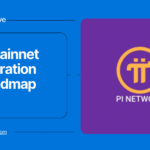Introduction to Cardano
Cardano (ADA) is a proof-of-stake blockchain network designed to support decentralized applications (dApps) while ensuring a multi-asset ledger and smart contracts. Unlike many other blockchain technologies, Cardano does not rely on the foundational architectures of Bitcoin or others. Instead, it collaborates with leading academics to develop innovative solutions subjected to academic peer review, ensuring a robust foundation for its platform.
The Vasil Hard Fork and Its Implications
On September 22, 2022, Cardano underwent the significant vasil hard fork, which aimed to enhance its smart contract capabilities, improve throughput, and lower transaction costs. Alongside these improvements, the hard fork also facilitates better transaction validation. Such upgrades are vital for Cardano as it progresses toward increased efficiency and performance in its network.
What Makes Cardano Stand Out?
One of the main features of Cardano is its unique proof-of-stake mechanism known as Ouroboros. This system divides the blockchain into epochs, each segmented into time slots. A new slot leader is elected for each time slot, responsible for adding a block to the chain. This partitioning allows Cardano to be theoretically infinitely scalable, capable of accommodating multiple transactions simultaneously.
Furthermore, the ADA coin serves as the native currency for Cardano, honoring Ada Lovelace, the first computer programmer. Currently, ADA holders can delegate their coins to stake pools to earn rewards and pay for transaction fees on the platform. In the future, ADA will provide holders with voting rights, allowing them to influence the network’s evolution















